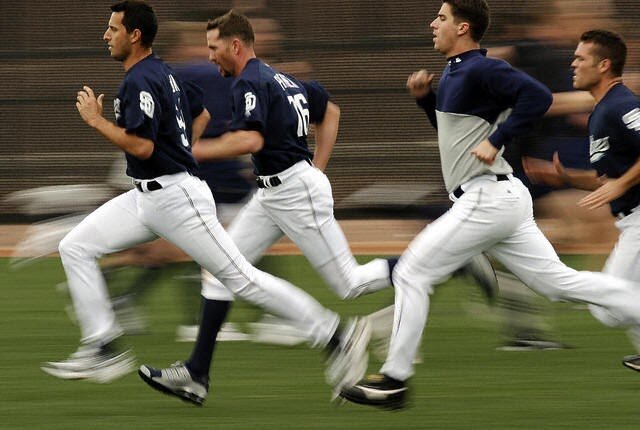
This time of year is always a fun one for us at Sparta, along with other private facilities that work with MLB and NFL athletes preparing for big upcoming months. The MLB athletes are getting physically prepared to win a roster spot at Spring Training, while the NFL combine hopefuls are refining their specific skills and technique to win a payday, and ensure a high draft slot.
Prior to joining Sparta Science, I was coaching at a private facility working with mainly MLB clients in the offseason. At this time of year, we always had to address the question of training for specific conditioning tests that the athlete was most likely to face upon arrival to spring training. Should we train the athlete to excel at the 300-yard shuttle, or to be more resilient for the real demands of their sport? Do we train a pitcher to be strong and powerful to throw 98, or to not finish last in their mile test in week one of camp?
“Why should I run for 1-mile continuously when my sport never requires me to run more than 20 yards at a time?”
Great question.
Lower body endurance training, or bouts longer than 15 seconds, can be extremely detrimental to GRF (ground reaction force); lowering jump height, sprint time, and rotational power – All the things that make that athlete unique, to begin with. What about building a strong aerobic foundation? Fortunately, upper body exercises can provide improvements to the metabolic machinery of the muscles without negatively affecting the lower half. There are many ways to build the required aerobic capacity, while maintaining proper form and biomechanics. Density training, anyone?
Look at the big picture.
The NFL hopeful looks at the preparation slightly differently, and rightfully so. The NFL combine assessments lack validity (measuring what they are supposed to measure), and organizations are aware of this. The College of Business at the University of Louisville conducted a study in 2008 with the goal of determining what (if any) correlation there was between the players’ performance in the combine tests (both physical and psychological), and their performance in the NFL. They found no correlation between the Combine performance and actual game performance, with the exception of sprint tests for running backs.
NFL teams recognize this problem, and one GM told me that the medical exams are the only worthwhile information anymore, outside the most obvious criteria – an athlete’s ability to play football. Still, every NFL hopeful runs through these series of tests which has remained relatively unchanged over the last 30 years. So if everyone knows these combine tests aren’t valid measures of an athlete’s performance on the field, why do we still do them?
Good news is Sparta Science is now a part of the NFL combine, so both quantitative and qualitative measures are now captured as data. If two athletes both jump 30 inches, does that mean they are equal? It’s not about the height of the jump, but more so “how” the athlete gets there. It’s nice to see that most NFL executives are starting to see it that way.
The off-season coach, or trainer, should be worried about maximizing the athletes’ time and preparedness, not training for a test with no validity. The offseason seems like a long time until you realize how much can be accomplished in a just a few weeks time with solid training. Improving ground reaction force, while simultaneously improving efficiency should be the goal – not winning the first week of camp.
Keep in mind the big picture of why that athlete came to you. Being prepared for their sport is the highest priority.
Most conditioning tests are used as a scare tactic to stay in shape, not because they are a valid metric.
Maximize your athletes’ time. Focusing on qualitative factors instead of quantitative will help them in the long run.